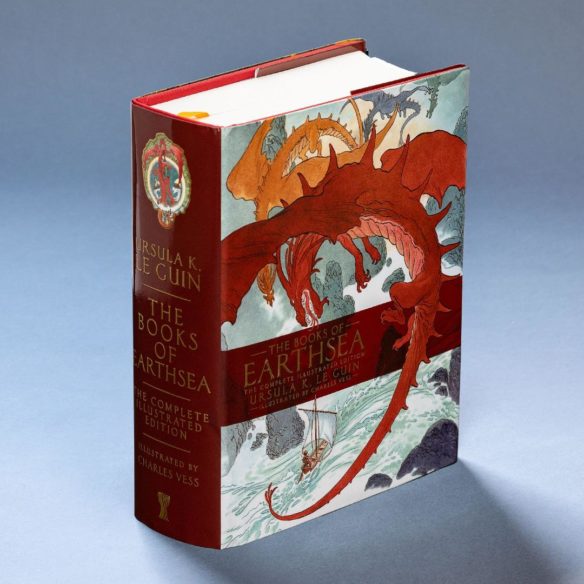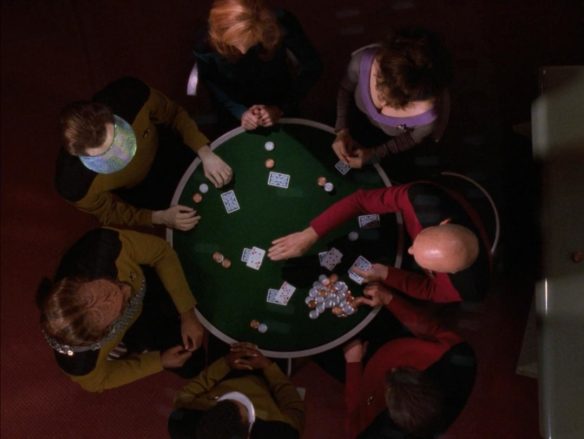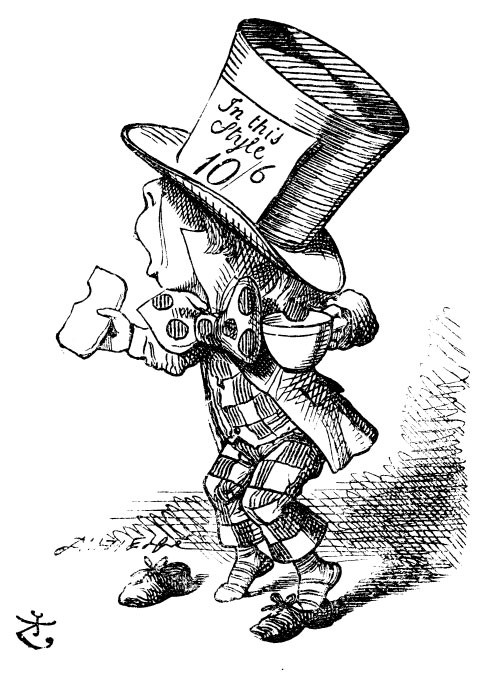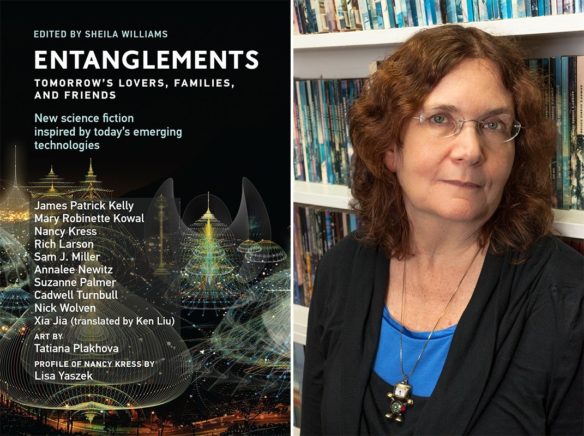(1) MORE CONTEXT FOR SFF HISTORY. Niall Harrison’s “Accelerated History: Chinese Short Science Fiction in the Twenty-First Century” at Vector notes that 2021 is the tenth anniversary of the publication of the translated Chinese short story that became the foundation for Clarkesworld’s ongoing collaboration with Storycom. And he has been inspired to work up a chronology of Chinese short sf in English, including a nifty diagram.
…What I hope that looking at the original chronology of stories does do, however, is provide another angle on the portrait of Chinese SF that has been presented to readers in English. To a limited extent it also makes it possible to contrast what was happening in English-language and Chinese-language SF at the same time; to think about the conscious and perhaps less-conscious choices made in the filtering process; and, most optimistically, to notice gaps, and provide a tentative framework within which future translations can be understood. In that spirit, in place of the original collections, I’ve organised my discussion into some rough periods, but I will revisit the books themselves at the end.
2. Liu Cixin Era
There’s nothing Liu Cixin likes more than a big picture, so let’s start there. With two single-author collections in the pile — The Wandering Earth (2013 / 2017 retranslations) and Hold Up The Sky (2020) — it’s not a surprise that he is the most-represented author, accounting for one-third of collected stories. In fact the skew is greater the earlier the period you look at. He accounts for over half of the 49 stories that first appeared before August 2011, and nearly three-quarters of the 28 stories that were first published in 2005 or earlier. In English, the story of Chinese SF in the early twenty-first century is overwhelmingly the story of Liu Cixin….
(2) BACK SPACE. James Davis Nicoll introduces Tor.com readers to “Five SF Travel Methods That Offer an Alternative to Starships”. (Holy cow, there’s a Langford novel on this list!)
Starships are all very nice—who among us has not wanted to own a Type-S Scout with the upgraded life support system?—but not all authors stick with that well-tested method of getting their characters from A to distant B. Ponder these five novels, each of which posits a new way of traversing the gulfs of space.
The Space Eater by David Langford (1982)
Project Hideyhole’s geniuses gave America Anomalous Physics. Anomalous Physics let Americans tweak the laws of physics to their taste. Thus, dimensional gates that facilitated an American colony on Pallas, a world that is many light-years from Earth. Thus, the inadvertent destabilization of six percent of the stars across the Milky Way and beyond. Thus, the inadvertent megamegaton explosion as Hideyhole stumbled across total conversion of matter to energy. Thus, the global thermonuclear exchange that followed thanks to the US assumption the explosion was a Soviet attack.
Having sat out WWIII, the EEC places very sensibly limits the use of AP. The problem is the American colony on Pallas, which has been isolated since WWIII. The Europeans detect that the Pallasians are dabbling in Anomalous Physics. Someone must be dispatched to convince Pallas to drop this research before more stars—stars like the Sun—are destabilized. The problem: a full-scale gate of the width needed for an adult male like unfortunate voluntold Forceman Ken Jacklin could well set off more novas. A smaller gate—1.9 cm, say—may be safe. The first step towards Pallas is going to be very, very hard on poor Forceman Jacklin, but this is a sacrifice his superiors are willing to make.
(3) YOUR TURN. Martin Morse Wooster got a kick out of a flash fiction story “Mozart Made A Tsunami, Most Likely By Accident” by Jeff Ronan at Sci Phi Journal. (Which really is too short to excerpt.)
(4) CUE THE SAND. From Yahoo! we learn that “DUNE Has a New Release Date!” But before that, Eric Diaz recaps the entire history of “cursed” efforts to bring this book to the screen.
When Does Dune Arrive In Theaters?
Dune was scheduled for release on December 18, 2020. And though the film will debut at the Venice Film Festival in September (via Variety), it won’t arrive in theaters until October 22, 2021 (this is delayed from October 1).
(5) UNDERGROUND ART. Two resources with images and histories about the artwork in Lewis Carroll’s books.
The Public Domain Review presents “Lewis Carroll’s Illustrations for ‘Alice’s Adventures Under Ground’ (1864)”.
“[W]hat is the use of a book”, asks Alice in the opening scene to Lewis Carroll’s Alice’s Adventures in Wonderland, “without pictures or conversations?” This question from Alice is at once a critique of her sister’s pictureless tome, and a paving the way for the delight of words and images to follow. Indeed, John Tenniel’s famous illustrations — for both the first edition of Wonderland and its sequel Through the Looking-Glass — have become integral to how we experience the story, in both books and film. Tenniel, however, was not the first to illustrate the tale. That honor belongs to Carroll himself, whose original manuscript of the story (then titled “Alice’s Adventures Under Ground”) is littered with thirty-seven of his own sepia-ink drawings. It seems this entwining of word and image — so important to the published version — was there from the beginning….
“John Tenniel and his illustrations” at Alice-in-Wonderland.net.
…Carroll had Tenniel alter his illustrations several times, for example when he was not happy with Alice’s face – even when the woodblocks were already engraved, which meant also the woodblock had to be (partly) re-done.
That doesn’t mean Tenniel’s illustrations were exactly what Carroll described they should be. Tenniel had quite a lot of freedom to give his own interpretation to the illustrations. On several occasions, Carroll was very much willing to accept the artist’s ideas, and in the illustrations the typical style of Tenniel is recognizable. Tenniel had some freedom in selecting the scenes to be illustrated (Hancher), and when Tenniel complained about having to draw a Walrus and a Carpenter, Carroll was willing to change the characters of his poem for him….
(6) WHAT TO EXPECT FROM THE EDITOR. E. Catherine Tobler, editor of The Deadlands, found she actually had to spell it out:
(7) JACKIE LANE (1941-2021). Actress Jackie Lane, who played the companion of the First Doctor Who, has died at the age of 79 reports Radio Times.
…The sad news was confirmed by Fantom Films on Twitter last night, with a post reading “It is with deep regret that we announce that actress and friend Jackie Lane has sadly passed away. We pass on our sympathies to her family and friends. Jackie was best known to Doctor Who fans as companion Dodo Chaplet. RIP 1941 – 2021″
… Another fan wrote, “Despite appearing on-screen for just 19 weeks in 1966 as a hastily developed & consistently underserved character who exited the series as strangely & suddenly as she arrived, it’s really heartwarming to see all the love for dear Jackie Lane on #DoctorWho Twitter tonight. RIP.”…
(8) MEMORY LANE.
- 2019 — In Dublin 2019, fifty-one years after she got her first Hugo at Heicon ‘70 for The Left Hand of Darkness, Ursula Le Guin (who died in 2018) won her final Hugo for The Books of Earthsea: The Complete Illustrated Edition. It was not awarded a Best Novel Hugo but instead was awarded Best Art Book with its illustrations being by Charles Vess who won Best Professional Artist that same year.

(9) TODAY’S BIRTHDAYS.
[Compiled by Cat Eldridge.]
- Born June 25, 1903 — George Orwell. George Orwell, born Eric Blair in 1903. I’m not sure if Animal Farm counts as fantasy, but 1984 is clearly Science Fiction, and it may hold the record for the most neologisms added to English by a single SF book. Orwell was mostly known as a journalist and essayist, including his spats with H.G. Wells, most notably in “Wells, Hitler and the World State”. (Died 1950.) (Alan Baumler)
- Born June 25, 1925 — June Lockhart, 96. Maureen Robinson on Lost in Space which amazingly only ran for three seasons. She has a number of genre one-offs including Voyage to the Bottom of the Sea, The Man from U.N.C.L.E., The Greatest American Hero and Babylon 5. She appeared in the Lost in Space film as Principal Cartwright.
- Born June 25, 1935 — Charles Sheffield. He was the President of the Science Fiction and Fantasy Writers of America and of the American Astronautical Society. He won both the Nebula and Hugo Awards for his novelette “Georgia on My Mind” and a John W. Campbell Memorial Award for Best SF Novel for Brother to Dragons which is an amazing read. Much of his fiction is in his Heritage Universe series; the linked short stories of space traveller Arthur Morton McAndrew are a sheer comic delight. (Died 2002.)
- Born June 25, 1956 — Anthony Bourdain. That’s a death that hit me hard. Partly because he’s round my age, partly because, damn, he seemed so interested in everything that I couldn’t conceive him committing suicide. And yes, he was one of us with three works to his credit: Get Jiro! (with Joe Rose and Langdon Foss), Get Jiro: Blood and Sushi (with Joe Rose and Ale Garza) and Hungry Ghosts (with Joel Rose, Alberto Ponticelli, Irene Koh, Paul Pope). The first two are on DC, the latter‘s on Berger Books. I’m also going to strongly recommend, and it’s not remotely genre, note his Anthony Bourdain’s No Reservations: Iceland Special Edition just because it’s so damn fun to watch complete with fermented shark. (Died 2018.)
- Born June 25, 1960 — Ian McDonald, 61. Now here’s an author that I’ve read a lot of starting with his first novel, Desolation Road, and following through to his most recent, The Luna series. I do have favorites — the aforementioned Desolation Road and the other Mars novel, Ares Express, plus the India in 2047 series and The Dervish House are the ones I like the best. Chaga I think is the one I need to read again as I was annoyed by it the first time.
- Born June 25, 1981 — Sheridan Smith, 40. She makes the Birthday list for being Lucie Miller, a companion to the Eight Doctor in his Big Finish audio adventures starting in 2006 and running through at least this year. Her only video genre work was being in The Huntsman: Winter’s War as Mrs Bromwyn.
(10) COMICS SECTION.
- Farcus makes clear why a student is anxious about a visit to the principal.
(11) HELP WANTED. Looking for work in England?“Cambridge to Hire Archivist to Catalog Stephen Hawking Collection” says Mental Floss.
… Last month, it was announced that the University of Cambridge—where Hawking got his Ph.D. and worked for decades—would house the archive in its library. Now, as BBC News reports, Cambridge is looking for an archivist to “arrange, describe, audit the physical condition, rehouse, and review” all 10,000 or so pages. Their main task is to digitize every document so researchers around the world can access them online.
Applicants should have archiving experience; and since they’ll be operating out of Cambridge University’s library, they also need to be allowed to live and work in the UK. The gig is set to last two years, and it’ll pay somewhere between £30,942 and £40,322 (about $43,000 to $56,000). If you’re an avid archivist who’d like to have a hand in preserving Hawking’s legacy, you can apply online here.
(12) HEAD’S UP. The New York Times reports “Discovery of ‘Dragon Man’ Skull in China May Add Species to Human Family Tree” (registration required.) And there’s “A Virtual Reconstruction of a New Homo species, H. longi” at YouTube.
(13) DRUMROLL, PLEASE. “UFO report: US intelligence community releases long-awaited report” at CNN. (And CNN has the full text here.) Don’t they release these things on Friday so nobody will be in the office the next day and have to take questions?
The US intelligence community on Friday released its long-awaited report on what it knows about a series of mysterious flying objects that have been seen moving through restricted military airspace over the last several decades.
In short, the answer, according to Friday’s report, is very little, but the intelligence community’s release of the unclassified document marks one of the first times the US government has publicly acknowledged that these strange aerial sightings by Navy pilots and others are worthy of legitimate scrutiny.
The report examined 144 reports of what the government terms “unidentified aerial phenomenon” — only one of which investigators were able to explain by the end of the study. Investigators found no evidence that the sightings represented either extraterrestrial life or a major technological advancement by a foreign adversary like Russia or China, but acknowledge that is a possible explanation….
(14) HARD TO BELIEVE? Chris Carter tells the New York Times: “I Created ‘The X-Files.’ Here’s Why I’m Skeptical of the New U.F.O. Report.” (Registration probably required.)
…The plot of “The X-Files” was built on a conspiracy theory: The government is lying to you about the existence of U.F.O.s and extraterrestrials. Do I believe the government lies to us? Absolutely. I’m a child of Watergate. Do I believe in conspiracies? Certainly. I believe, for example, that someone is targeting C.I.A. agents and White House officials with microwave radiation, the so-called Havana syndrome, and your government denied it.
Will the new report, or any government report, give us clear answers? I’m as skeptical now as I’ve ever been.
In 1996 I was invited to the clinic of the Harvard psychiatrist John Mack to witness the regression hypnosis of a self-professed alien abductee. I first met Dr. Mack, who studied and ultimately believed in alien abduction, when he came to Fox Studios to discuss his work. I had used a Roper survey he was involved in (a poll of 6000 Americans on their belief in the existence of extraterrestrials) to sell “The X-Files” as a TV show in 1992, and later read his book, “Abduction.” So I knew something about what I was going to see. I went in doubtful, unprepared for the drama of a woman sitting next to me in tears and in terror over the encounter with aliens that she described, on a beach in Mexico. The experience turned out to be powerful and not a little unsettling….
… But the prosecution raises a good question: Where is the Deep Throat of the U.F.O. world? Why no credible deathbed confessions? As Nobelist Enrico Fermi’s famous paradox asked, if aliens are out there, why haven’t we seen them? Could the government actually be telling the truth? That it really doesn’t know what to make of the phenomena? Or is the truth above top secret?…
(15) YOU’D BE INCONSOLABLE. Vice recommends to players of vintage games: “Don’t Piss Off Bradley, the Parts Seller Keeping Atari Machines Alive”.
Every old video game console dies eventually. Moving parts seize-up, circuit boards fail, cables wear out. If a user needs a replacement connector, chip, ribbon, gear, shell—or any of the thousands of other parts that, in time, can break, melt, discolor, delaminate, or explode—they’re usually out of luck, unless they have a spare system to scavenge.
But there is an exception to this depressing law of nature. In San Jose, on a side street next to a highway off-ramp, inside an unmarked warehouse building, is part of the world’s largest remaining collection of factory-original replacement Atari parts — a veritable fountain of youth for aging equipment from the dawn of the home computing and video gaming era. This is the home of Best Electronics, a mail-order business that has been selling Atari goods continuously for almost four decades.
But if you’d like to share in Best’s bounty, as many die-hard Atari fans desperately do, there’s a very important piece of advice you need to keep in mind: whatever you do, don’t piss off Bradley.
Almost everyone who spends enough time loving, collecting, and using Atari products eventually finds their way to the Best Electronics website. And many of them quickly develop strong feelings about Bradley Koda, Best’s proprietor, who, by outlasting most of his competition, has become a sort of one-man Atari-parts powerhouse….
(16) RUH ROH! Straight Outta Nowhere: Scooby Doo Meets Courage the Cowardly Dog is a straight-to-video feature.
An original animated feature so exciting it’s scratching at the door! Comedy is unleashed when Scooby-Doo, your favorite mystery-solving mutt, teams up for the first time with Courage the Cowardly Dog. The canine colleagues sniff out a strange object in the middle of Nowhere, Kansas, the backwoods hometown of Courage and his owners, Eustace and Muriel Bagge. Soon, the mysterious discovery puts them on the trail of a giant cicada monster and her wacky winged warriors. Fred, Velma, Daphne and Shaggy know that this job is too big for a flyswatter. They’ll need the help of the doggy duo to piece together the puzzle. Can Scooby and Courage overcome their jitters and defeat the insect army before the whole world bugs out? Try not to get scared. We double-dog dare you!
[Thanks to Andrew Porter, Martin Morse Wooster, JJ, James Davis Nicoll, Daniel Dern, Michael Toman, John King Tarpinian, Cat Eldridge, and Mike Kennedy for some of these stories. Title credit belongs to contributing editor of the day Nicole J. LeBoeuf-Little.]




